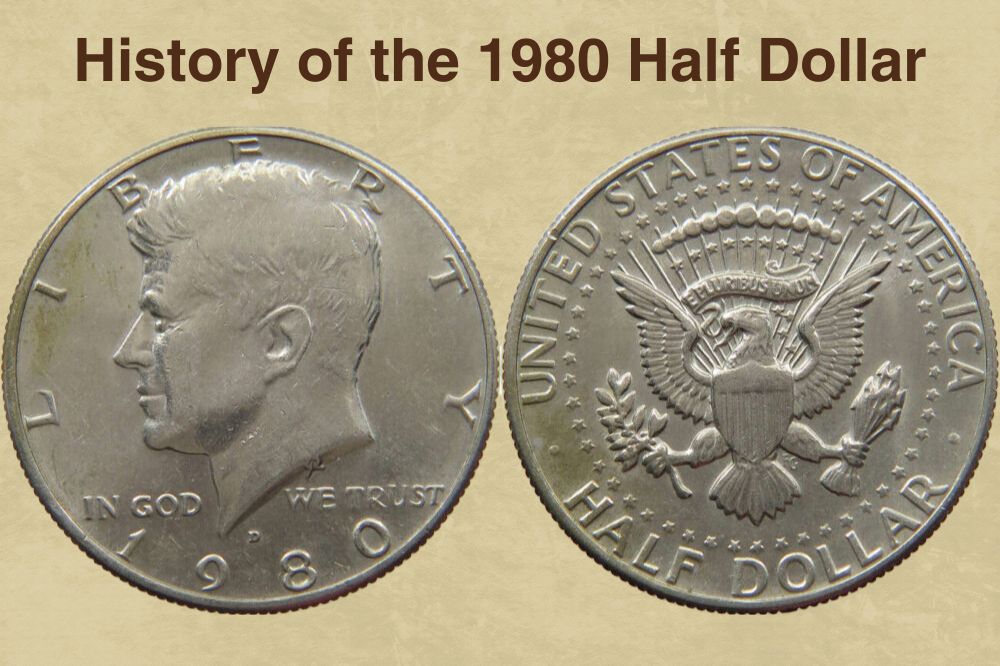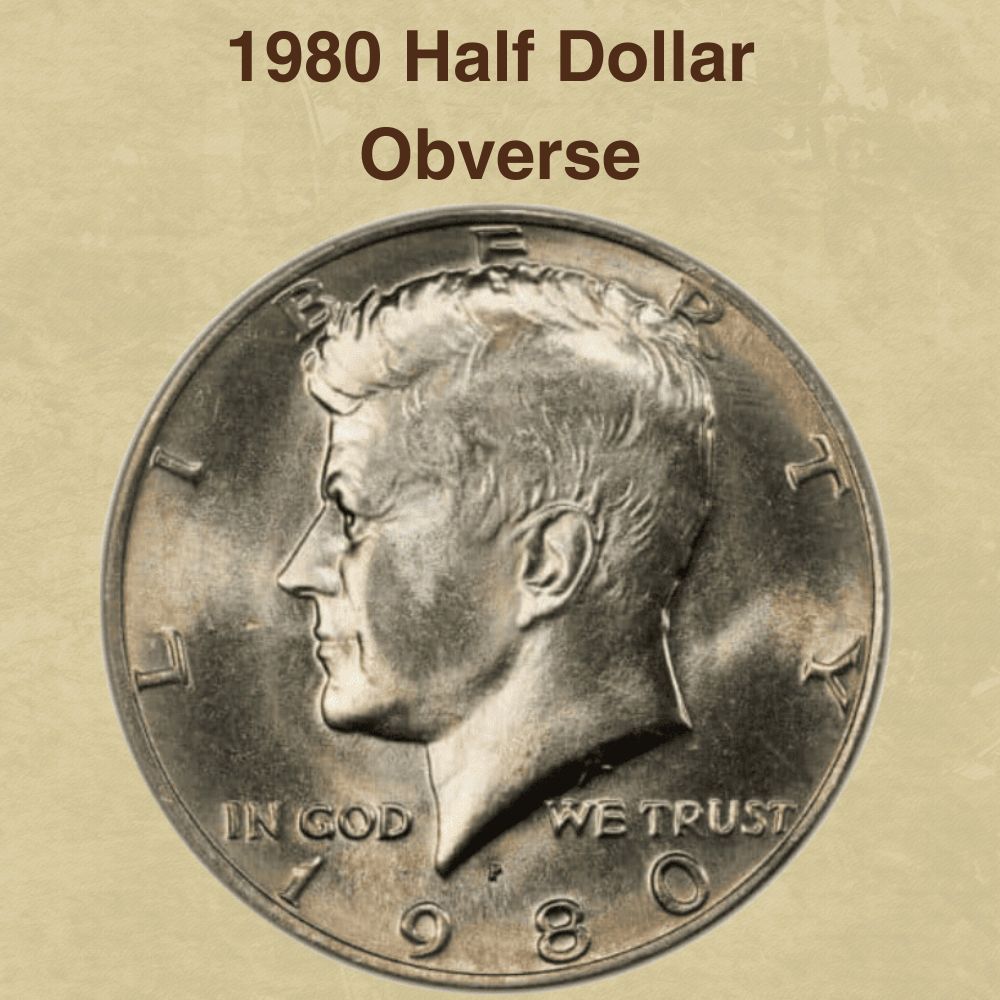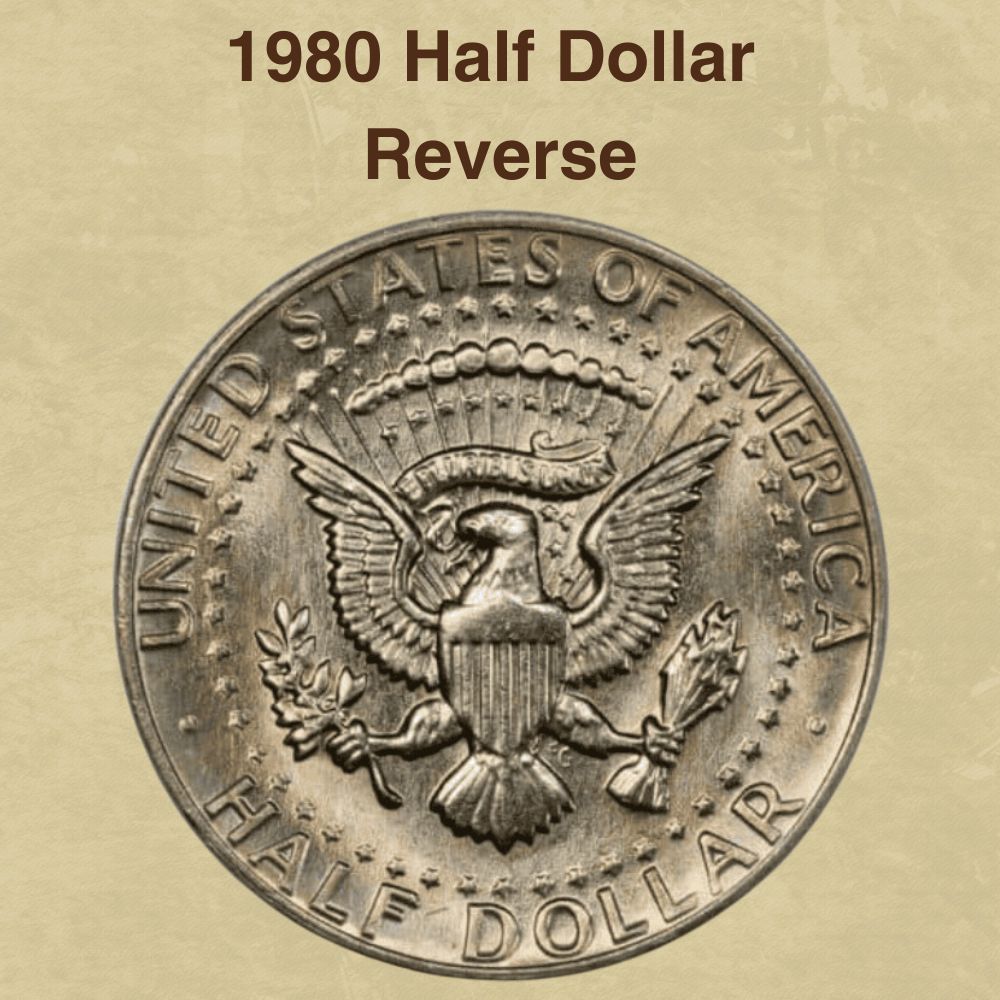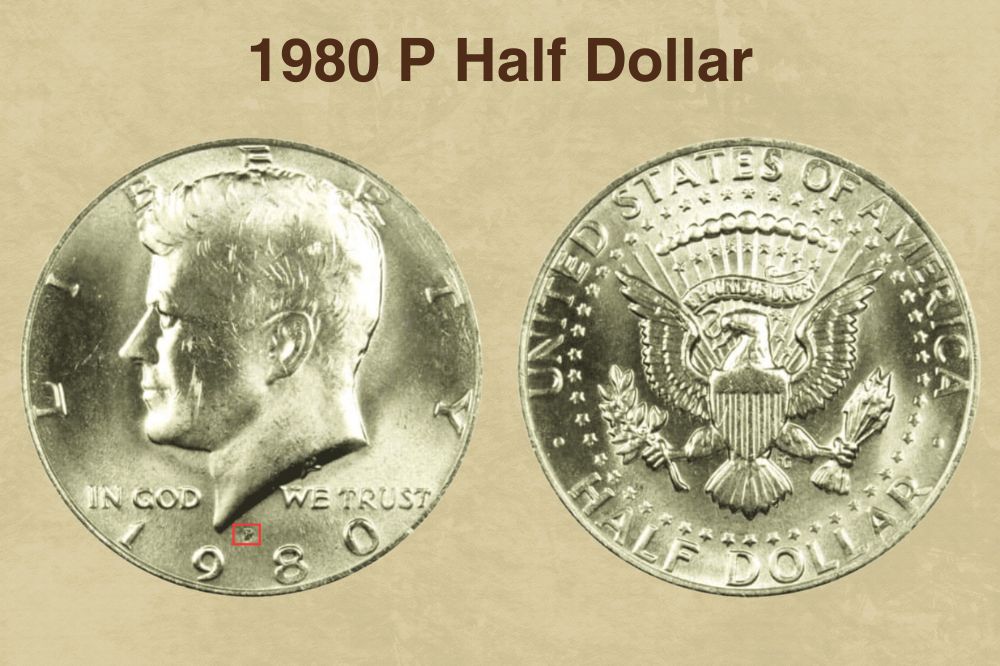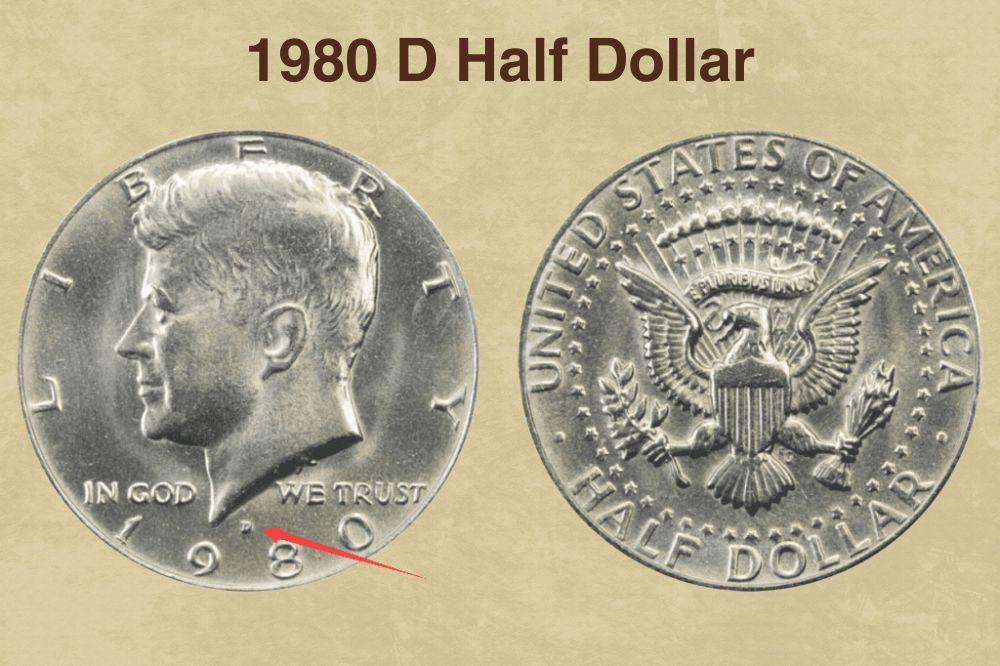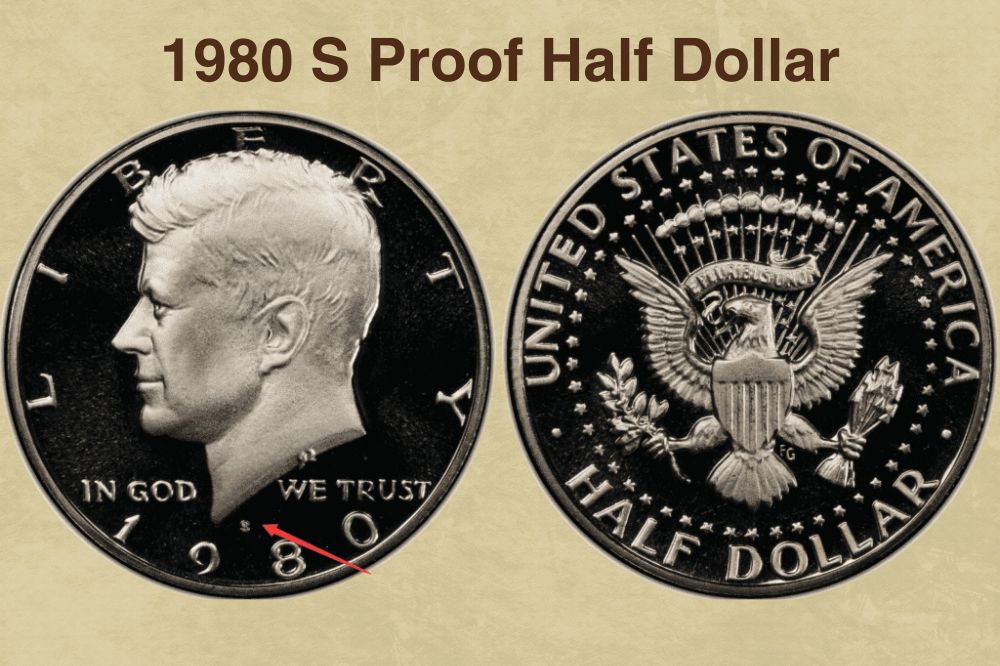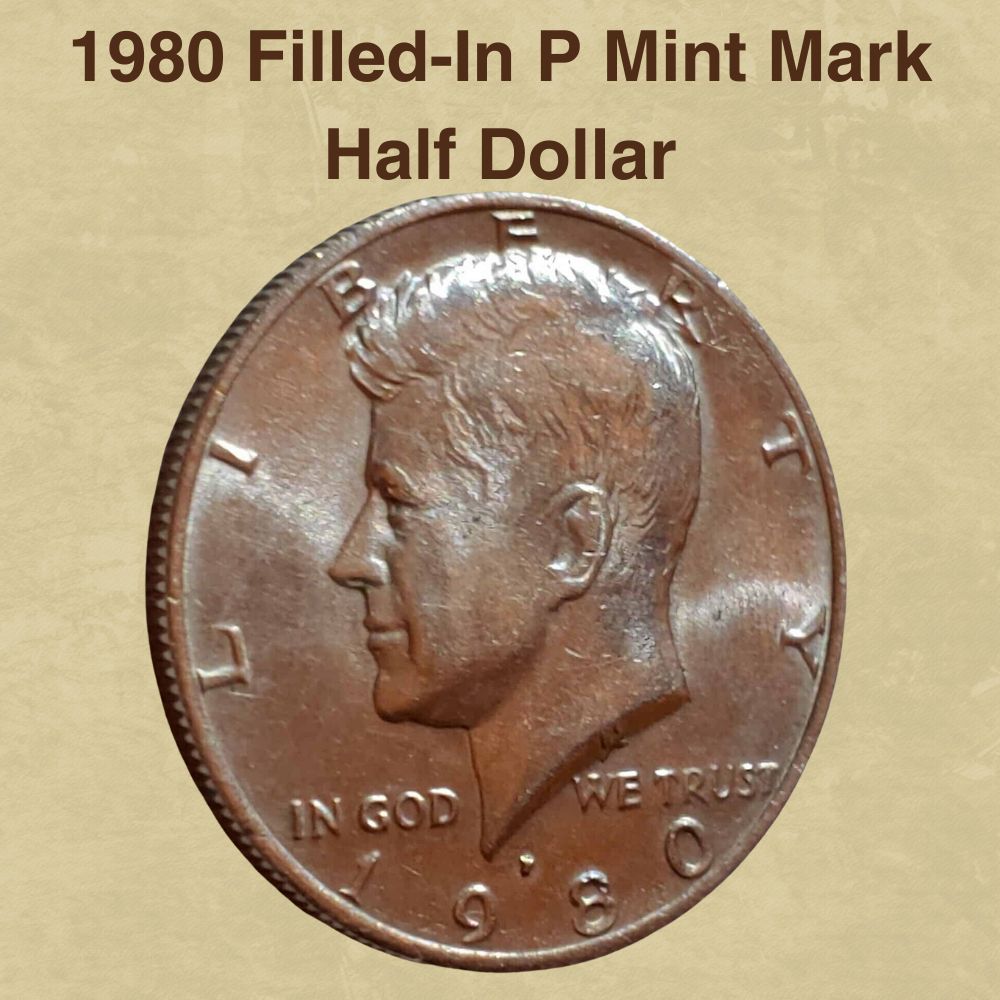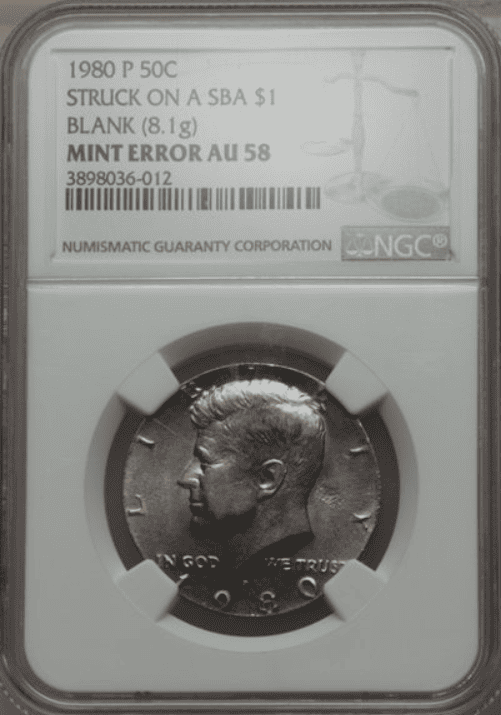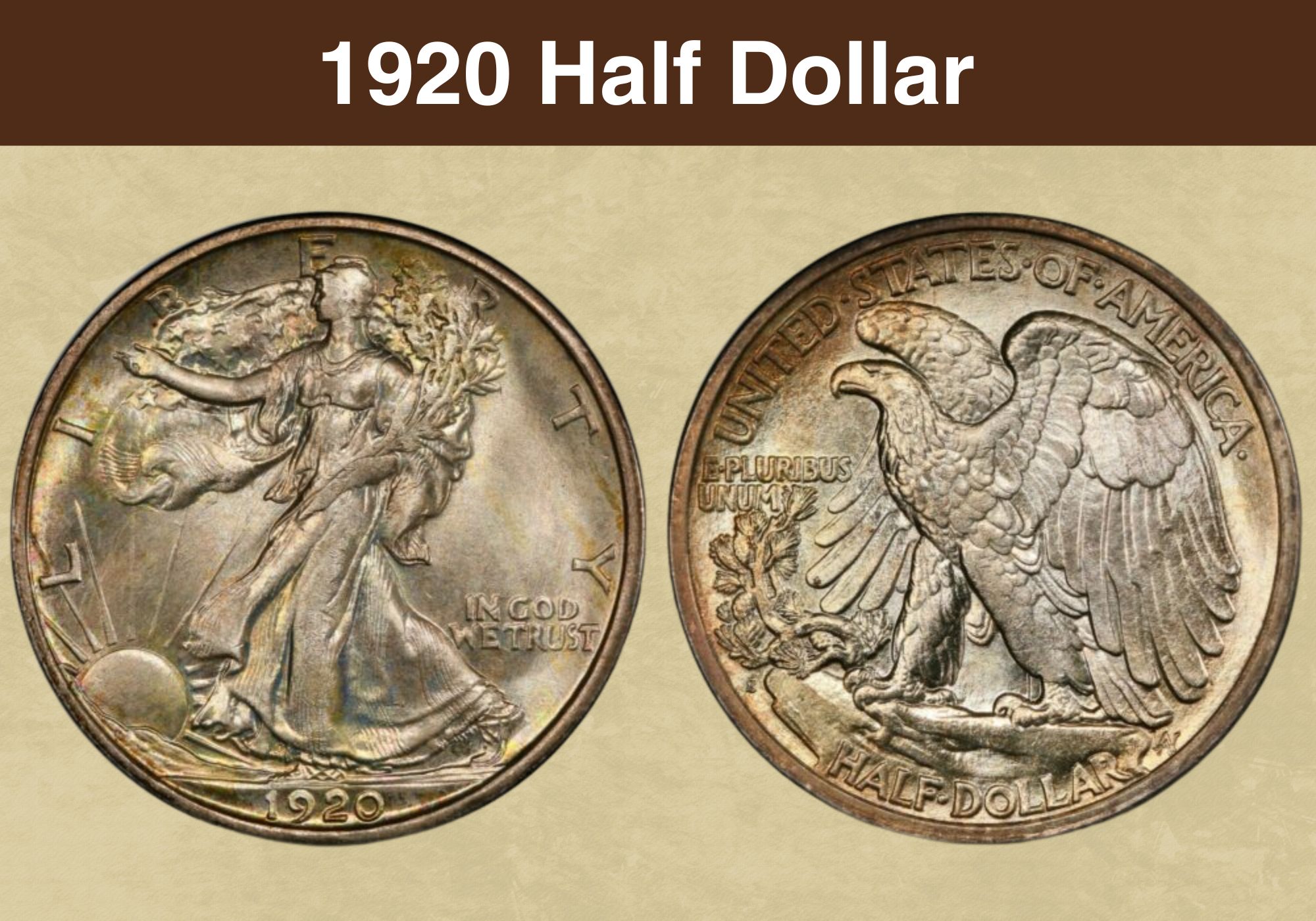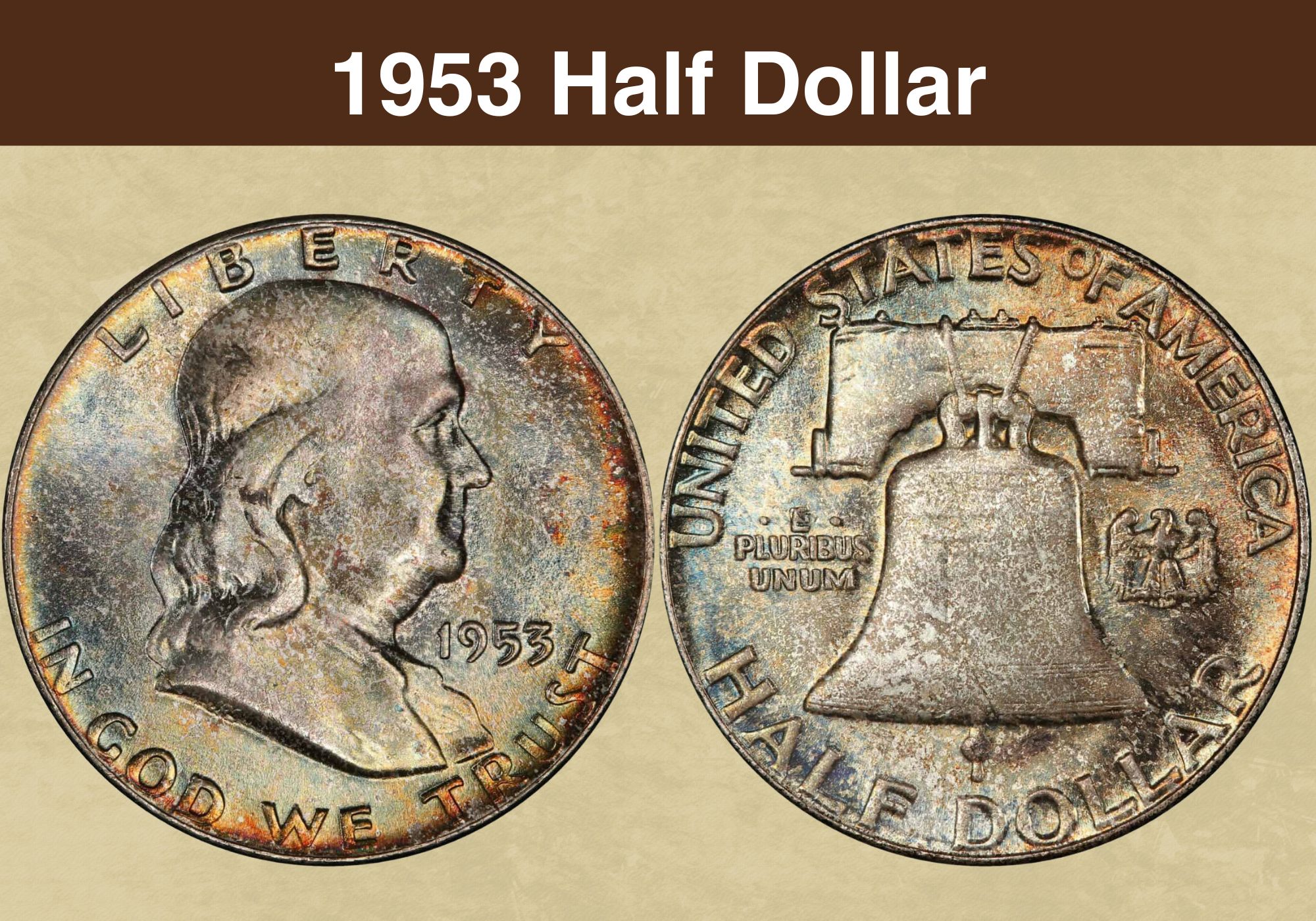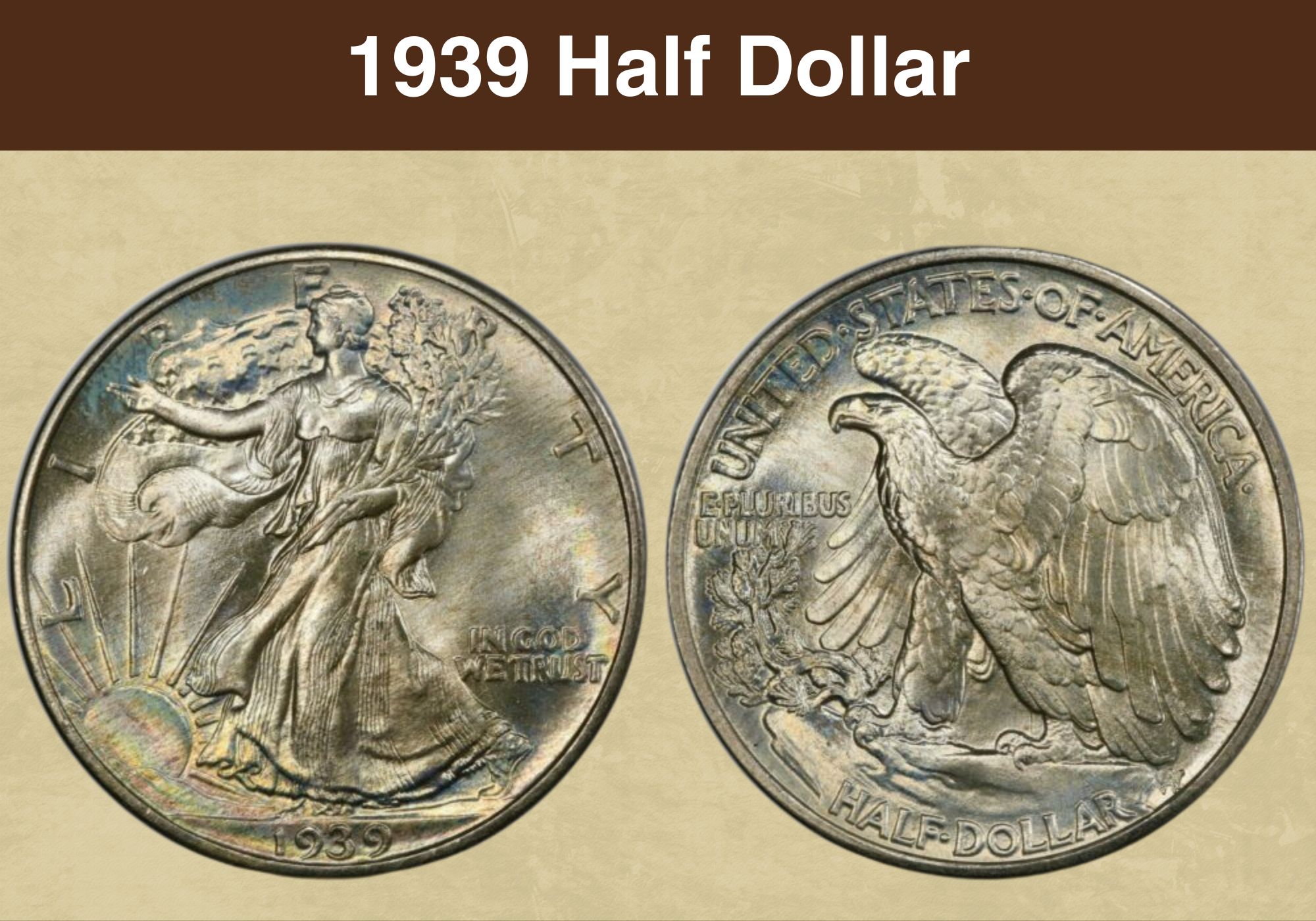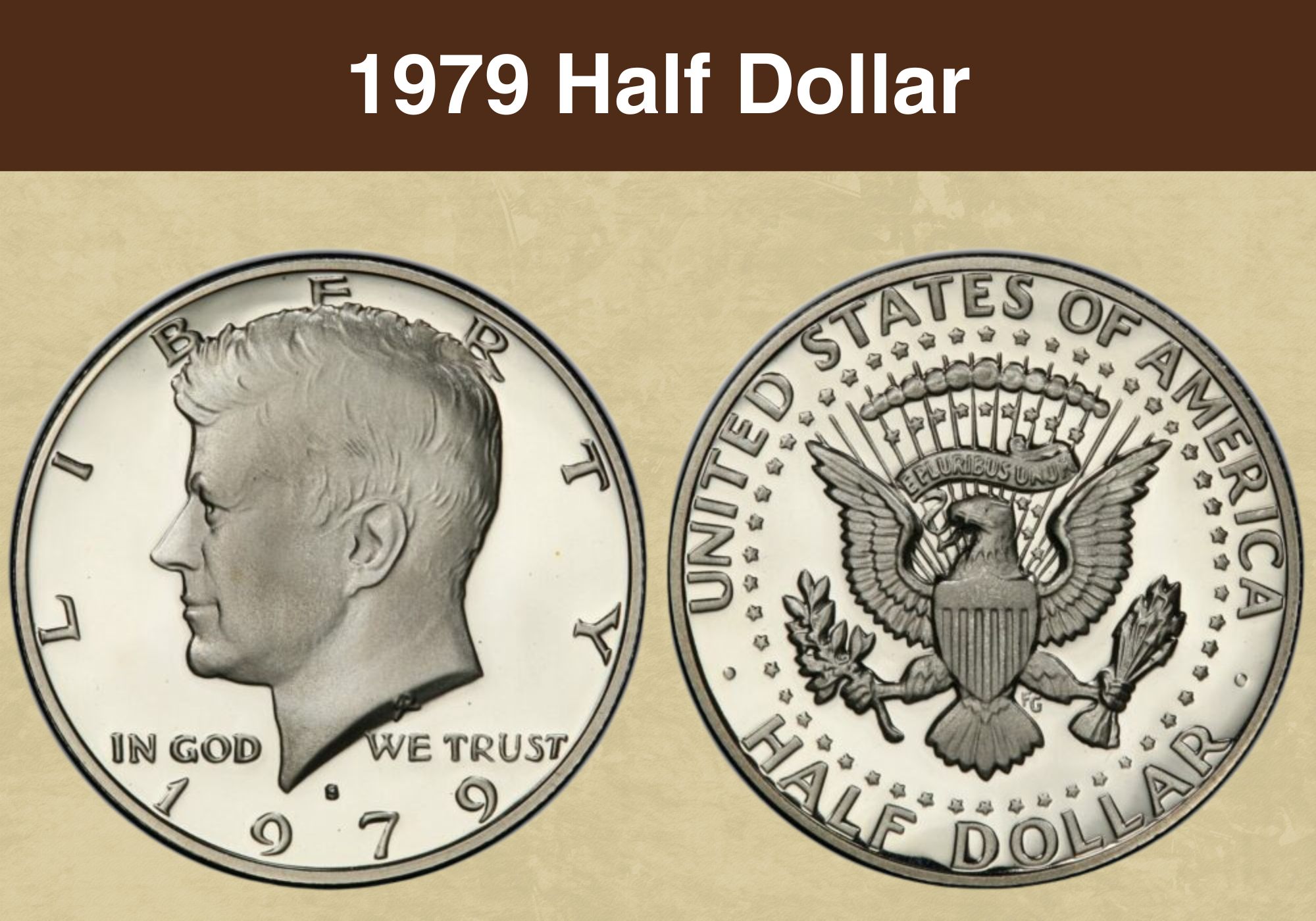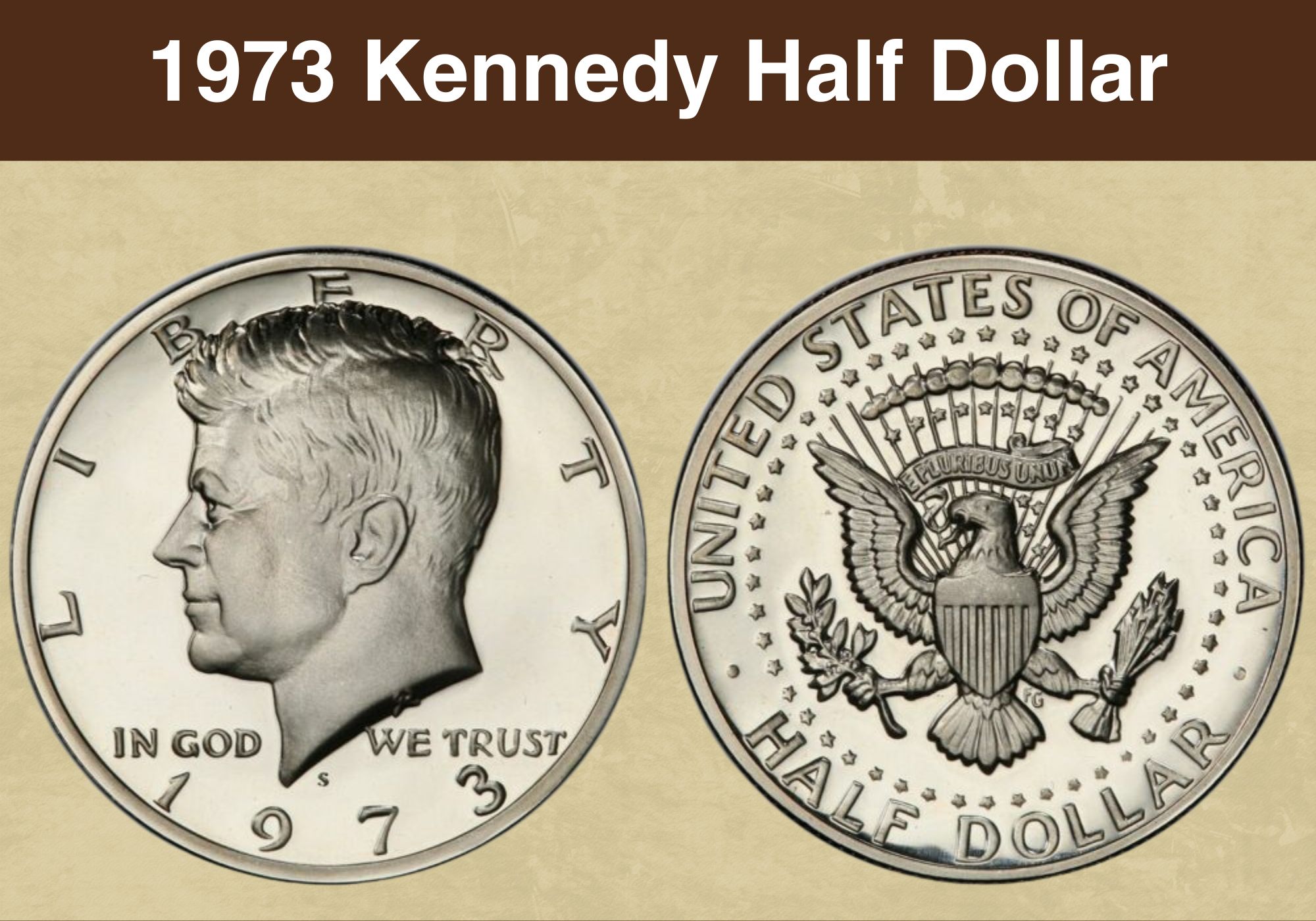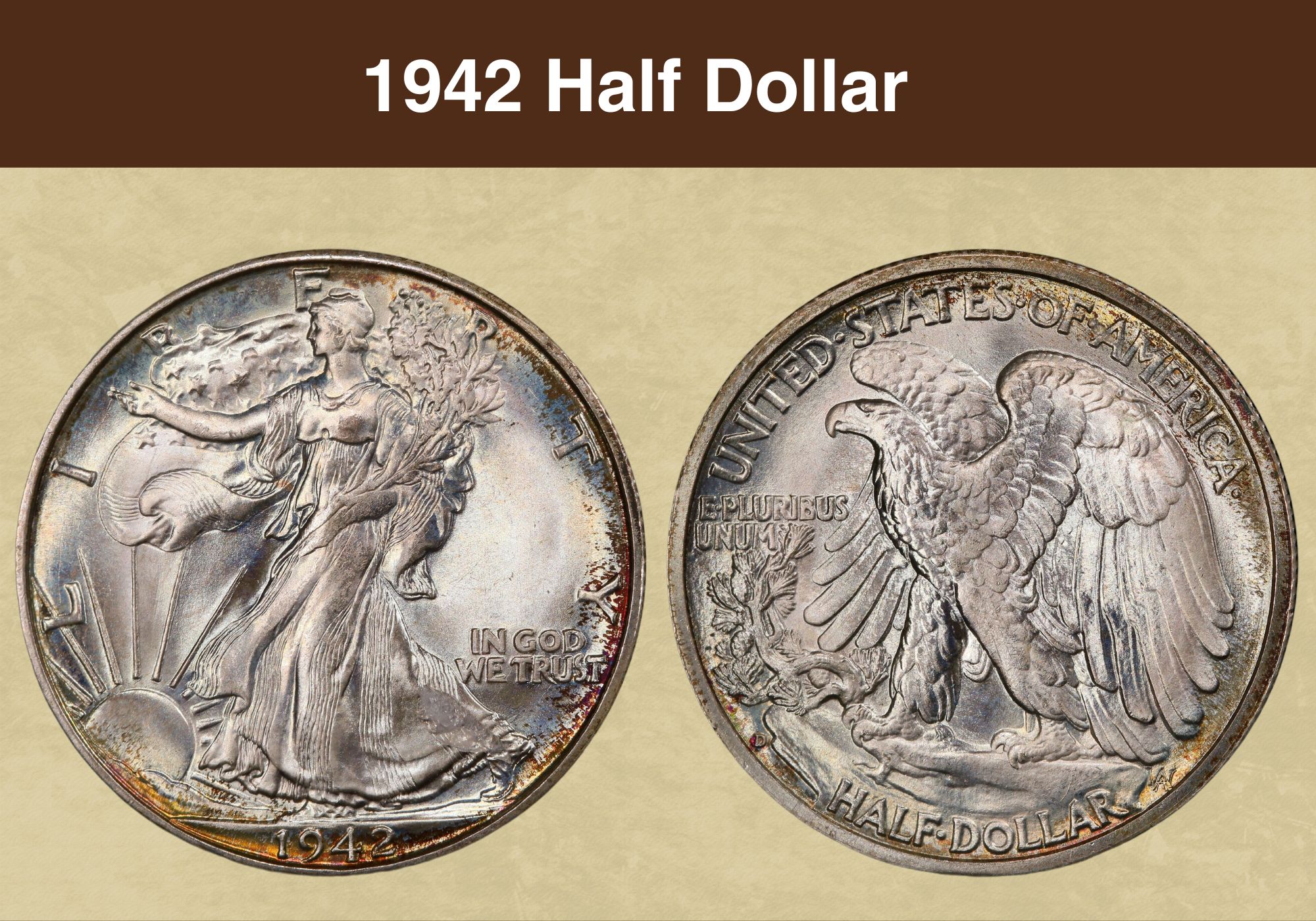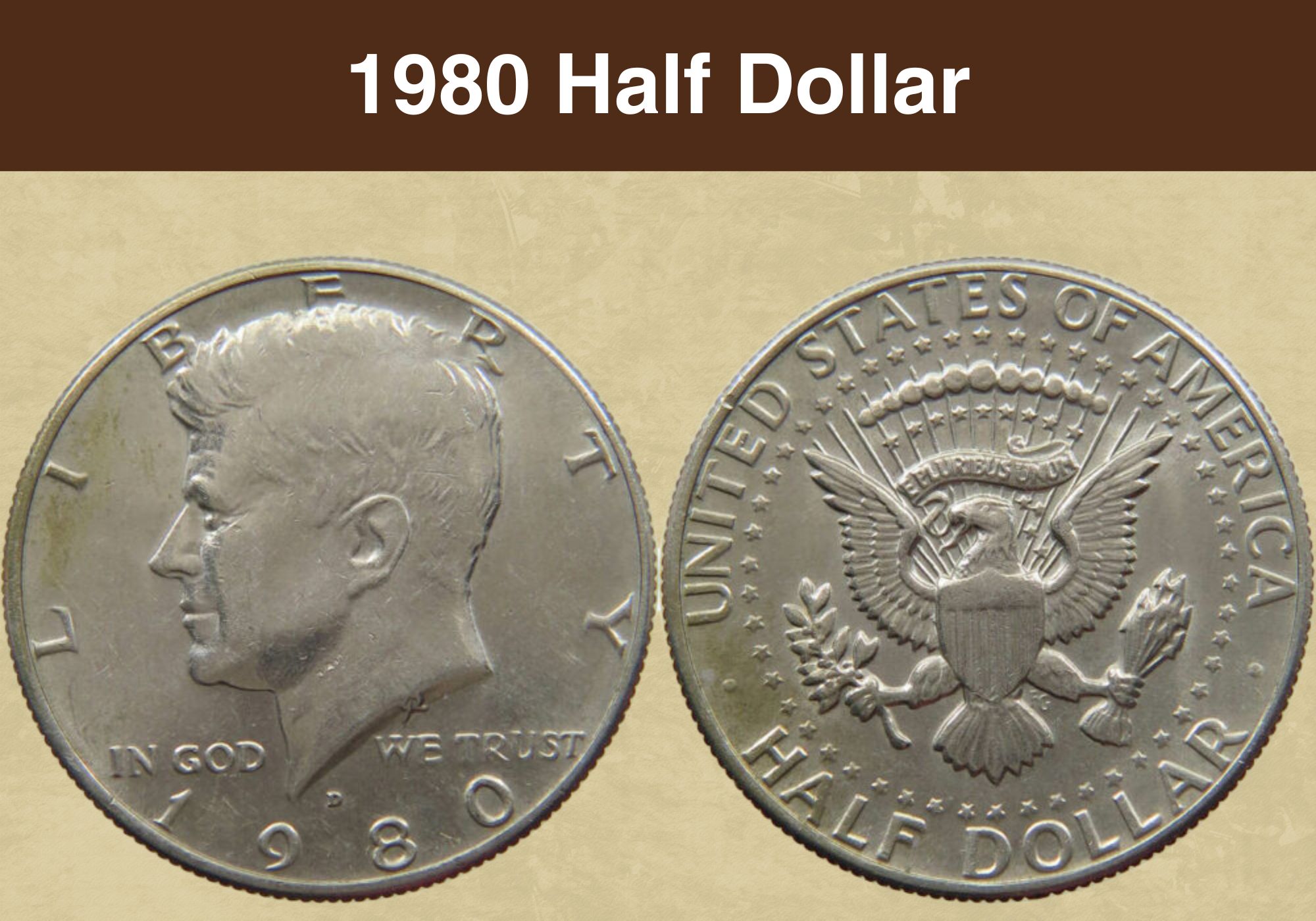
Coin Value Contents Table
- 1980 Half Dollar Value Chart
- History of the 1980 Half Dollar
- Features of the 1980 Half Dollar
- 1980 Half Dollar Grading Guides
- 1980 Half Dollar Value Guides
- 1980-P Half Dollar Value
- 1980-D Half Dollar Value
- 1980-S Proof Half Dollar Value
- Rare 1980 Half Dollar Errors List
- Where to Sell Your 1980 Half Dollar ?
- FAQ
Do you own a 1980 half dollar and wonder how much money you can get selling it?
Or, are you looking to add a 1980 half dollar to your Kennedy collection?
This guide is for you!
Kennedy half dollars are very collectible, so adding them to your coin collection is an excellent idea. But, you must remember that 1980 recorded the highest mintage for that decade, so Kennedy halves from this date may not fetch a premium.
That said, you might be on to something if you come across a 1980 half dollar with an odd error. Errors can significantly increase the value of your old coins, but you need to know what to look for.
We wrote this guide to help you figure out the 1980 half dollar value. You will discover errors worth hundreds of dollars, tips on grading your Kennedy dollars, and 1980 half dollar varieties that are worth money.
So, let’s jump in and find out: Is a 1980 half dollar worth any money?
1980 Half Dollar Value Chart |
||||
| Mint Mark | Good | Fine | Extremely Fine | Uncirculated |
| 1980-P Half Dollar Value | $0.60 | $0.60 | $0.60 | $110 |
| 1980-D Half Dollar Value | $0.60 | $0.60 | $0.60 | $4,350 |
| 1980-S Proof Half Dollar value | – | – | – | $55 |
History of the 1980 Half Dollar
The 1980 half dollar belongs to the long-running Kennedy Half Dollar Series that began in 1964, following the assassination of our country’s 35th president, John Fitzgerald Kennedy.
On November 23, 1962, a day after the tragic event that shook the nation, plans were underway to commemorate the assassinated president on a coin.
Mint director Eva Adams gave Chief Engraver Gilroy Roberts the go-ahead to design a commemorative Kennedy half dollar. Jacqueline Kennedy suggested that the Mint replace Benjamin Franklin on the half dollar instead of replacing the George Washington Quarter.
These changes needed congressional approval, and luckily, the proposals for a new Kennedy half dollar did not face any significant legislative opposition. The new president, Lyndon Johnson, was also instrumental in helping to fast-track the launch of the new commemorative coin.
Gilroy Roberts and assistant chief engraver, Frank Gasparro had designed a Kennedy medal previously, which the president had approved. So, in the interest of time, they used the medal’s existing designs on the obverse and reverse to design the new Kennedy half dollar, only making slight modifications to the original designs.
Jacqueline Kennedy and JFK’s brother Robert Kennedy approved the trial strikes. But, the president’s widow requested that her husband’s hair be changed slightly to make it more realistic.
Production of the coins began soon afterward. Initially, the Mint only struck proof coins, and production of coins meant for circulation began in January at the Denver Mint, followed by the mint in Philadelphia. By March 24, 1964, the Mint released the new Kennedy half dollars.
The public had highly anticipated this coin, and long lines were formed in front of banks as people eagerly awaited to acquire a piece of history commemorating one of our country’s most popular presidents. Unsurprisingly, the Kennedy half dollar was hoarded in large numbers; the coin’s silver content did not help.
In 1965, the Mint reduced the silver content in the coins from 90% to 40%, but this did not deter people from hoarding these coins en masse. Therefore, the 1980 half dollar is a copper clad, not a pure silver coin, as some collectors may believe.
Also read: 13 Most Valuable Franklin Half Dollars Worth Money
Features of the 1980 Half Dollar
In this section, we’ll look at the unique attributes of the 1980 half dollar. We strongly recommend familiarizing yourself with these features to identify whether a 1980 half dollar is worth money.
The Obverse of the 1980 Half Dollar
The half dollar was created to commemorate President John F. Kennedy, so his profile picture appears predominantly on the coin’s obverse. According to Chief Engraver Gilroy Roberts, the left-facing profile offered the most attractive appearance of the president.
The word LIBERTY also appears boldly around the top half of the coin. Further down, you see the year date, 1980, at the bottom along the inner rim.
Our motto, IN GOD WE TRUST, is also shown on the obverse. The letters IN GOD appear on the left while WE TRUST is shown on the right; JFK’s profile’s truncated neck separates the two sets of letters.
The Reverse of the 1980 Half Dollar
The half dollar’s reverse is more detailed. It showcases the presidential seal design featuring the national bird, an eagle.
The eagle has its wings wide open and holds an olive branch in its left talon and 13 arrows in its right. The olive branch represents peace, while the arrows symbolize war. A shield is shown before the eagle’s chest, representing a readiness to defend the country’s sovereignty.
In its beak, the eagle holds a banner with the words E PLURIBUS UNUM, our country’s motto, which means, ‘In one, many.’’ A ring of fifty stars surrounds the entire design; each star represents the fifty states.
Other Features of the 1980 Half Dollar
Like other Kennedy half dollars struck from 1965 onward, the 1980 half dollar comprises a pure copper core and an outer clad of 75% copper and 25% nickel.
This large coin has a reeded edge of 150 reeds, measures 30.61 millimeters in diameter, and weighs 11.30 grams.
All three mints—Philadelphia, Denver, and San Francisco, produced half dollars in 1980. You can identify a coin’s origins by the mint marks P, D, or S on the obverse, next to Kennedy’s truncated neck.
Also read: 13 Most Valuable Kennedy Half Dollar Worth Money
1980 Half Dollar Grading Guides
Grading your 1980 half dollar entails examining your coin for signs of wear. These coins were hoarded uncirculated in large numbers, so examples in mint state are fairly accessible but may involve some searching as collectors have held on to their specimens.
Check for signs of weakness on high points, such as the hair below the parting, the cheek, jawbone, and the middle of the neck.
On the reverse, the tip of the eagle’s right wing and the arrows should show no sign of wear, as should the central tail feathers.
Although an uncirculated 1980 half-dollar may be unevenly untoned, it should show full mint luster through and through.
Check out this video for tips on grading your 1980 Kennedy half dollar.
1980 Half Dollar Value Guides
In this section, we will answer the question: How much is a 1980 half dollar worth?
There are three varieties of the 1980 half dollar whose value we will explore below. The three include the following:
- 1980-P Half Dollar
- 1980-D Half Dollar
- 1980-S Proof Half Dollar
1980-P Half Dollar Value
Approximately 44,134,000 Kennedy half dollars came from the Philadelphia Mint in 1980. With such a high mintage, you can expect the 1980-P half dollar to be common across all grades.
The population of these coins begins to thin out in MS66, although you can still acquire them at a slightly higher price. This coin is scarce in MS67, but some few pieces are available. In MS68 and higher, it is almost impossible to find a 1980-P.
Circulated 1980-P half dollars are plentiful in circulated condition, with examples costing between $0.60 and $0.75. Even in some mint state grades, these coins are notably affordable, so you can get your hands on an MS65 example for as little as $14.
In high grades of MS67 and more, a 1980-P half dollar will bring in as much as $110. According to the Professional Coin Grading Service (PCGS), the most expensive 19080-P dollar is graded MS63
1980-D Half Dollar Value
The Denver Mint had the second-highest mintage, producing 33,456,449 Kennedy half dollars in 1980. These coins are common in all grades up to MS66.
Examples start dwindling at M67, but several specimens have been certified and graded. Finding 1980-D half dollars in grade MS68 and above is extremely difficult, and those found are acquired at a premium.
Circulated 1980-D half dollars are worth between $0.60 and $0.75. Examples in mint state grades are relatively affordable; with just $18, you can acquire a good-looking 1980-d half-dollar graded MS65.
Gem quality examples are extremely rare, and prices can be as high as $4350 for specimens graded $4,350.
1980-S Proof Half Dollar Value
About 3,554,806 proof coins were struck at the San Francisco mint. The Cameo and Deep Cameo population is sufficient to satisfy collector demand.
Although the mintage was standard and the coins generally well struck, the 1980-S proof half dollars do not fetch a premium.
Deep cameo examples are worth up to $55, allowing collectors to affordably acquire beautiful, full mint luster coins.
Also read: 11 Most Valuable Half Dollars In Circulation
Rare 1980 Half Dollar Errors List
While half dollars from 1980 are worth more or less their face value, some with errors are worth a premium.
Here are some 1980 half dollar errors to look out for:
1980 Filled-In P Mint Mark Half Dollar Error
Filled-in mint mark errors occur due to using worn dies to strike the mint mark.
The 1980 half dollars were generally well struck, but due to the high mintage, it was inevitable that the dies would wear out at some point, resulting in errors such as filled-in mint marks.
When you look closely at a 1980-P half dollar with such an error, you will see that the mint mark looks less like a well-defined P and more like a blob.
Owning a 1980 filled-in P mint mark half dollar can fetch you between $50 and $80, depending on the coin’s condition.
1980 Doubled Die Half Dollar Error
The doubled-die is one of the most common minting errors. It occurs when the working die strikes the planchet multiple times at different angles, doubling the design elements.
Coins with strong doubling are more valuable than those with weak doubling. In 1980 half dollars, the doubling is generally weak, but you will notice this error in the inscription IN GOD WE TRUST and the year date.
A 1980 half dollar with a doubled die error is worth between $50 and $100, depending on how visible the doubling is.
1980-P Half Dollar Struck on a SBA Planchet
This is arguably the most interesting error in the 1980 half dollar series. This error occurred when the design of a Kennedy half dollar was struck on a planchet meant for the Susan B. Anthony dollar.
The Mint struck the Susan B. Anthony dollar from 1979 to 1981 and then again in 1999. This error may have occurred when a Susan B. Anthony planchet was accidentally left in the minting press.
In 1980, when the Mint changed the dies to create Kennedy half dollars, it struck the design elements onto the remnant Susan B. Anthony planchet.
Collectors will pay thousands for the 1980-P half-dollar strike on an SBA planchet.
1980 Collar Clash Half Dollar Error
A collar clash, also known as a clash strike or a railroad rim, typically occurs in reeded coins. This error occurs when the (usually) hammer die strikes the top edge of the collar die.
This clashing or striking causes an indent in the area of collision, so when the hammer dies and strikes the planchet, it leaves behind what looks like a double rim.
Where to Sell Your 1980 Half Dollar ?
Now that you know the value of your coins, do you know where to sell those coins online easily? Don’t worry, I’ve compiled a list of these sites, including their introduction, pros, and cons.
Check out now: Best Places To Sell Coins Online (Pros & Cons)
FAQ
Is a 1980 half dollar rare?
No. The mints in Philadelphia, Denver, and San Francisco combined struck millions of Kennedy half dollars in 1980. These coins are abundant on the rarity scale, and the only scarce examples are those in gem condition or half dollars graded MS66 and higher.
What makes a 1980 half dollar valuable?
A 1980 half dollar is generally only worth its face value. Even mint state grades are affordable. That said, half dollars from 1980 with the mint mark D can be very valuable in mint state. Such pristine examples are extremely rare, but a few do exist; if you are lucky to find one, it will fetch you a fortune.
Is a 1980 half dollar real silver?
No. 1980 half dollars are clad coins comprising a pure copper core and an outer layer of copper and zinc. The Mint entirely eliminated silver from the half dollar in 1971. Since then, Kennedy half dollars contain no silver and are made of 75% copper and 25% zinc.

